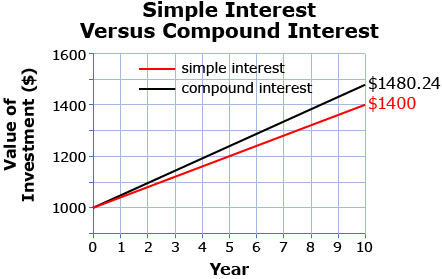Lesson 4
Completion requirements
Created by IMSreader
1. Lesson 4
1.11. Explore 7
Module 1: Sequences and Series
Try This 5

Go to your course folder and retrieve your work from Lesson 2 Try This 1. In that exercise you investigated the investment of $1000 in a savings bond that pays 4% simple interest at the end of every year. The investment earned $40/yr. The value of the investment at the end of each year formed an arithmetic sequence.
In the video Deriving a Formula for Compound Interest, you solved a problem involving the investment of $1000 in a savings bond that pays 4%/yr compounded annually. The value of the investment at the end of each year formed a geometric sequence.
- In what ways are these problems similar? In what ways are they different?
- In Lesson 2 Try This 2, you created a graph relating the value of the investment over the first 10 yr. Create a new graph relating the value of the compound-interest investment over the first 10 yr.
- What conclusions can you draw about compound interest as compared to simple interest?
- Which investment, the investment with simple interest or the investment with compound interest, is worth more at the end of 10 yr? By approximately how much?

